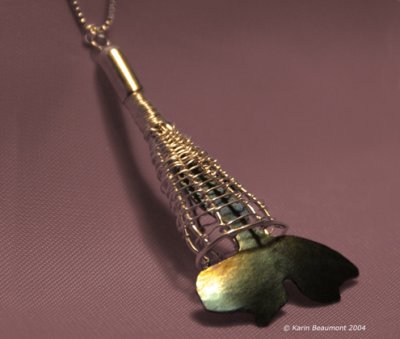Thesaurus
sea butterfly
I did bring up a pteropod which literally means "winged foot" but is commonly called a sea-butterfly...
The Sea butterfly is under threat from excess carbon dioxide in our atmosphere. This gas, when dissolved in sea-water, forms an acid that can eat away the animal's shell. This is also true for other marine life that has carbonate scales or shells. These tiny animals play a critical role in keeping our climate stable by aiding the burial of greenhouse gases from our air to the deep-sea...
I have observed changes within a season of the types and numbers of plankton, and also changes between seasons. These are related to changes in temperature and salinity in the ocean as well as the extent of ice-cover. Such changes trigger changes in the plankton community which affect other animals in the ocean. The interactions between all the creatures in the ocean are very complex! I have observed changes in ice-cover and the timing of sea-ice melt. I am aware of changes in the ocean such as ocean acidification which is affecting the health of some species, such as the sea-butterfly...

Karin Beaumont, Threatened Treasure
The animal depicted in this sculpture (Threatened treasure), Clio pyramidata, is around 1 cm long, has a carbonate shell that houses the animal's organs, and swims with its 'foot' that resembles a tail. It is a graceful, transparent creature. I used the textile technique of weaving to simulate the faceted nature of the shell, and coloured titanium to simulate the blue of the ocean that is seen through the transparent body. This wearable sculpture is a call to protect the magnificent diversity of life in our oceans that is vital to the function of our world...
The original idea came from a Zooplankton Guide that my friend and former PhD supervisor co-authored...it is a taxonomic guide. It also had a link with when I did my first voyage and I was doing some net hauls from the trawl deck of the Aurora Australis. The hauls were only vertical with a small net, so I did not retrieve a lot of plankton, but I did bring up a pteropod which literally means "winged foot" but is commonly called a sea-butterfly. I did not know what the creature was at that point, but we kept it in a jar for a while and I watched its movement - they are such graceful creatures. I wish I could describe the movement to you.
Dr Karin Beaumont








